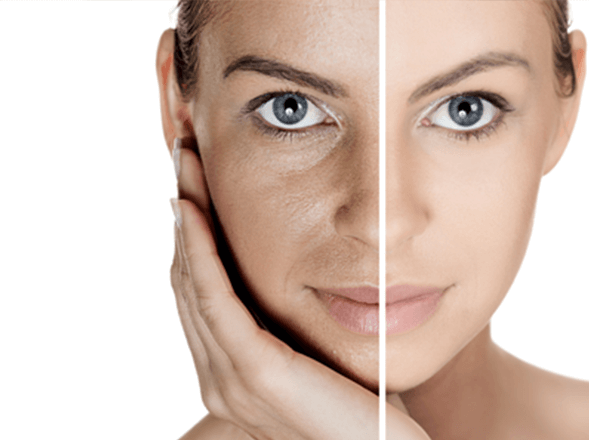

Laser Hair Removal
Melasma is a medical condition that is cosmetically troubling. It mostly affects the face, takes months to treat, and can easily recur. Because of this, our medical providers and aestheticians take a serious approach to melasma. Not only do we devise individualized treatment plans, but we also take the time to educate our patients about melasma triggers and prevention to prolong each individual’s treatment results.
Melasma is a benign chronic hyperpigmentation disorder that causes dark blotches on the skin. This discoloration is caused by overproduction of pigment in the skin that is stimulated by certain triggers, such as sun exposure, hormones, and skin irritation. melasma is most commonly seen on the face, but in rare cases can occur on other sun-exposed areas. About 90% of affected individuals are women. It is more common in individuals with darker skin tones. Melasma has also
shown to be hereditary in some cases. Even though melasma does not cause symptoms, treatment is often desired for aesthetic reasons.
MELASMA TYPES
- Skin layer affected
- Ease of treatment
- Frequency
- Ease to maintain
- Ethnic
Hydroquinone is a bleaching agent available in a 2% and 4% cream formulation. The 2% strength is available over the counter, while the 4% cream is only available in our office (Blanche ®) or by prescription. Hydroquinone is applied directly to the hyperpigmented areas of the skin twice daily for 4-6 months at a time. Usually a several month long break is necessary in between treatments.
Retinoids are often used in melasma treatment to increase the skin’s absorption of bleaching agents. They also help to rid the skin of excess pigment by promoting cell turnover. Retinoids are available in different strengths and formulations. They can be received by prescription or purchased at our office (Refissa®).
Azelaic acid is a prescription topical that targets and inhibits pigment producing cells. When used daily for a few months, it can effectively reduce hyperpigmentation and even skin tone.
Glycolic acid peels can reduce the appearance of dark pigmentation from melasma by exfoliating the superficial layer of the skin. They involve little downtime or discomfort. A series of glycolic acid peels are most effective when used in combination with a series of microdermabrasion treatments every 2 weeks.
Koji Power is a serum that we compound freshly in our office. It contains kojic acid, lactic acid, and vitamin C. When used twice daily, these agents help to blend and even skin tone. They are applied to the entire affected area, rather than only darkened skin.
Melanage Skin Brightening Cream is a customizable compound that we mix in our office. It contains vitamin A, arbutase, glycolic acid, and Green Tea extract. This combination of ingredients lightens the dark discoloration caused by melasma, gently exfoliates away superficial dark pigment, and may also calm inflammation in the skin. Best results are achieved with daily application for several months. It can be used as initial therapy, or as part of an aftercare skin regimen following a Melanage peel.